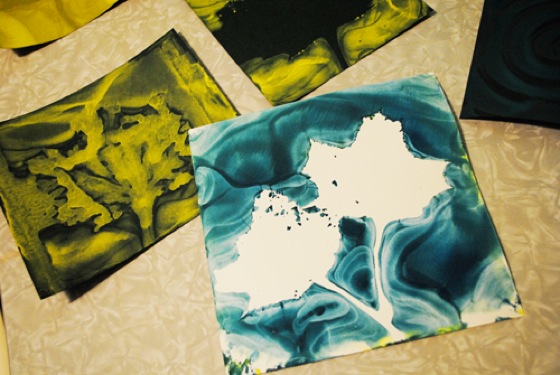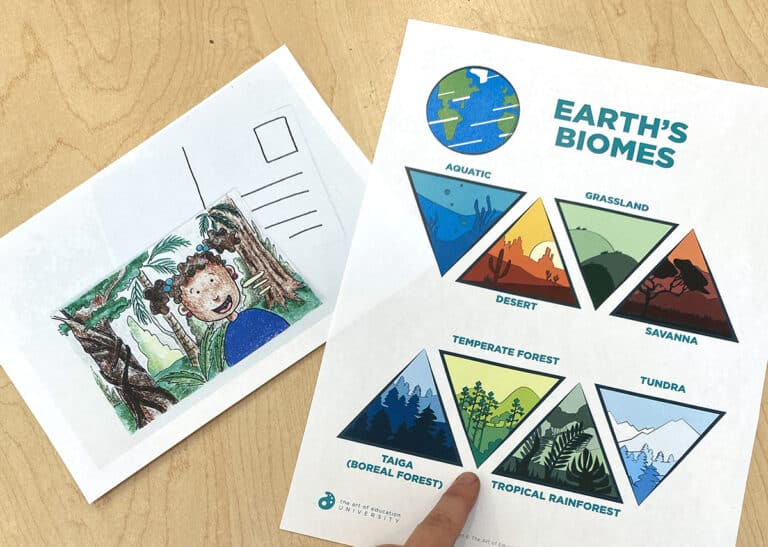Printmaking is such an accessible art technique. You don’t need a lot of fancy supplies or a big budget to get kids excited about pulling prints. It can be so fun and satisfying to engage kids through unconventional materials that you might already have in your classroom, or even in your kitchen!
Here are 4 offbeat printmaking materials that can turn your classroom into a wacky, world-class print studio.
1. LEGOs
LEGO blocks are a great way for kids to create print blocks. Students can create any number of patterns, images, or even letters out of LEGOs (they must be reversed, of course!) and print them, change them, and print them again. Imagine how pumped your students will be to find that they get to use LEGOs in the art room!
2. Gelatin (Jello) Printing
Gelatin makes an excellent substrate for monoprinting. Students can ink up a cookie sheet full of hardened gelatin and pull one-of-a-kind prints.
Two methods work here: students can carefully draw into the ink or they can add leaves or lace and print negative and positive image.


3. Clay
Clay can be both a medium to print with and a medium to print on. I like to replace my oil-based modeling clay every few years. But I am an art teacher, and hate to throw stuff away. Why not have students create stamps from the old clay? Simply add texture, ink it up, and print! You can rinse the clay and remold for a whole new stamp. Printing on clay is another simple way to up your game. Either print textures onto wet clay or print with paint or glaze onto fired pieces for a new twist on some old favorites.
4. Food Printing
We are all familiar with the old apple and potato print methods, but have you ever tried bread? What about Chex cereal, or brussel sprouts? I love the idea of a “Printmaker’s Buffet” where stations are set up around the room with different foods for kids to experiment printing with.
Have you tried any of these methods in your classroom?
What are your favorite unconventional printmaking methods or materials?
Magazine articles and podcasts are opinions of professional education contributors and do not necessarily represent the position of the Art of Education University (AOEU) or its academic offerings. Contributors use terms in the way they are most often talked about in the scope of their educational experiences.




